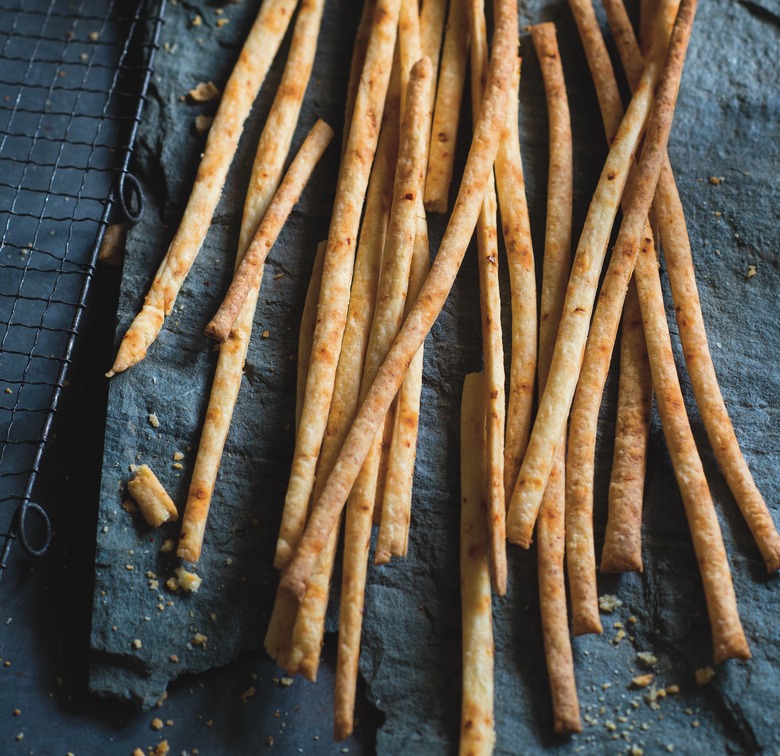Hot Snacks: Feta Cheese Straws With Turkish Chili
We may receive a commission on purchases made from links.
Nobody puts out a better Middle Eastern cookbook than the husband-wife team of Greg and Lucy Malouf. Their recipes come with beautiful stories that will inspired you to make something phenomenal in your kitchen, and add a new favorite to your repertoire. Try these feta cheese straws on for size!
A twist on the ever-popular cheese straw, these use sharp, salty feta and Turkish red chilli flakes, which give them an addictive spicy kick. Serve before dinner with a glass of chilled Fino sherry! They are best eaten on the day you bake them, but the dough freezes well for up to a month.
Reprinted with permission from New Feast: Modern Middle Eastern Vegetarian
Hot Snacks: Feta Cheese Straws With Turkish Chili
The US already has a national anthem, but its de facto theme music might just be the O'Jays' "For the Love of Money," a song whose intro consists of the word 'money' sung over and over. It captures the ravenous passion for cash that shapes America's character. But just how much money is in the US?

Ingredients
- Heaping 1/2 cup all-purpose flour
- 7 ounces feta
- 4 1/2 tablespoons butter
- 1/2 teaspoon salt
- 1 teaspoon Turkish red chili flakes
- 1 tablespoon crème fraîche (or sour cream)
Directions
- Combine all the ingredients, except for the creme fraiche, in the bowl of a food processor. Pulse briefly, 5 or 6 times, until the mixture resembles coarse breadcrumbs. Add the creme fraiche and process for 10-15 seconds, or until the mixture starts to clump together and form a ball.
- Tip onto a floured work surface. Divide the mixture in half and shape into rounds. Wrap each piece in cling film and chill for 30 minutes.
- When ready to bake, preheat the oven to 350°F and lightly grease a baking tray.
- Use a floured rolling pin to roll out a portion of the dough to as even a rectangle as you can manage. It should be about ¼ inch thick and up to 10 inches long. With a very sharp knife, cut into long strips, around ½ inch wide – but a little randomness in both length and shape is good.
- Lift the strips carefully onto the prepared tray (you may have to bake them in batches) and bake for around 15 minutes until a deep golden brown. Do make sure you don’t undercook them, or they will be softish, instead of crisp and crunchy. Cool on the tray for a few moments, then transfer to a wire rack to cool further. They are at their very best just slightly warm but, in any event, should ideally be eaten on the day you make them.
